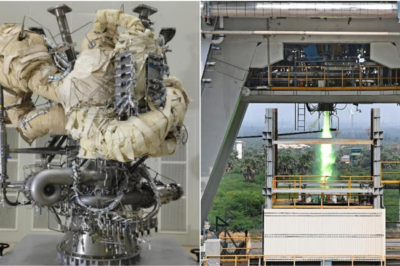
- ISRO successfully tested a new Semicryogenic engine, SE-2000, for LVM3 rockets.
- The engine uses eco-friendly Liquid Oxygen and Kerosene for better performance.
- This breakthrough could increase payload capacity from 4 to 5 tonnes in space missions.
How does this change India’s space future?
The Indian Space Research Organisation (ISRO) has achieved a major milestone in rocket technology. On March 28, scientists conducted the first successful test of the Engine Power Head Test Article (PHTA) at the Propulsion Complex in Tamil Nadu. This marks a key step in developing a high-thrust Semicryogenic engine, SE-2000, that will power the next-generation Launch Vehicle Mark-3 (LVM3).
Unlike conventional rocket stages, which use toxic and hazardous fuels, this new engine relies on Liquid Oxygen and Kerosene, making it a safer and more efficient alternative. The SE-2000 engine generates an impressive thrust of 2,000 kN, significantly improving the rocket’s capability. This technology, available only in a handful of countries, will enhance India’s ability to send heavier satellites deeper into space.
What’s next for ISRO?
This successful test paves the way for further experiments to fine-tune the engine’s performance. The next steps involve testing a fully integrated version of the engine before incorporating it into actual rocket launches. The newly developed Semicryogenic propulsion system, combined with an upgraded cryogenic stage, will boost LVM3’s payload capacity in geostationary missions from 4 tonnes to 5 tonnes.
With such advancements, ISRO continues to position India as a leader in space technology, moving closer to ambitious interplanetary missions and future deep-space explorations.








































Leave a Reply